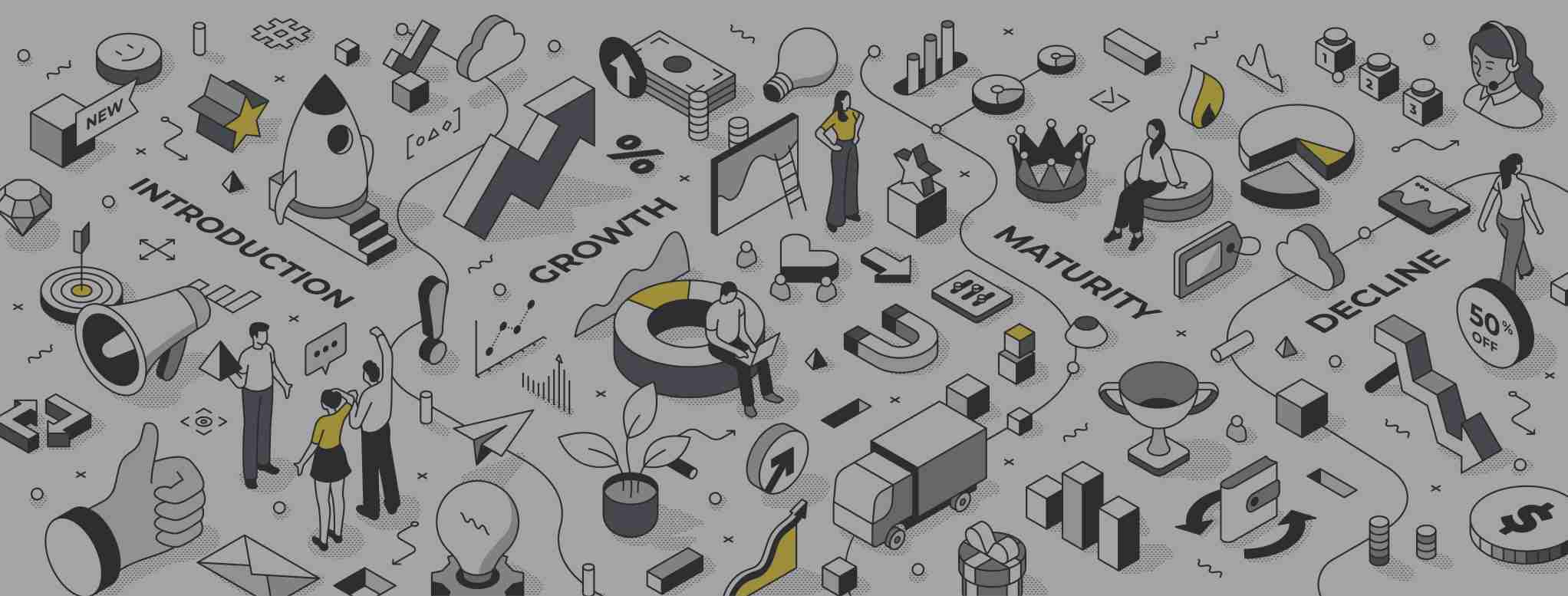Inbound Marketing has been around for a while. But how is it different from the traditional way of doing marketing? And which marketing strategy to use when deciding your approach? Let's look into 5 key differences between Inbound and Outbound Marketing!
What Is Inbound Marketing and Outbound Marketing
Outbound Marketing is a traditional method of marketing. The goal is to reach potential customers and turn them into leads. For many companies in the past, it was an effective way to speak to the widest possible audience in the shortest amount of time. But traditional marketing has its downsides.
There is no specific target audience. Therefore, it's often interruptive and doesn't address the customers' needs. It lacks personalisation and this makes it less effective. And because it's hard to tell what's working and what's not, the ROI is uncertain.
But the biggest drawback is the costs! HubSpot showed that an Outbound Marketing campaign costs 62% more per lead. What does this mean? You are spending more money to reach the audience you can't effectively target. As a result of that, your money goes out of the window.
- 44% of direct mail never gets opened.
- 86% of viewers skip TV ads.
- Click-through rates on banner ads are on a record low.
- 84% of 25-34-year-olds have left a favourite website because of irrelevant ads.
What are some of the Outbound Marketing examples?
TV and Radio ads have a long history and are the most obvious. But it can also be cold calling, email spam or billboards around the highway. And what's the idea behind the word “outbound?” It simply means the company is constantly “out” advertising for its audience.
Inbound Marketing focuses on creating quality and engaging content that attracts potential customers. It's a less aggressive and more personalised approach to building trust and maintaining long-term relationships with your prospects. This enables a perfect alignment between Inbound Marketing and the Buyer's Journey, from which BOTH sides benefit.
Top Inbound Marketing Tactics
Content Marketing helps your customers find the information when they need it. Think blog posts, videos, ebooks or product tutorials. Ideally, your content addresses customers' needs and offers solutions. It's a good strategy to start with blogging since it's easy, and everybody can do that. Don't forget to do keyword research before you write the first word. Analyse your competition, and it's a great source of inspiration!
Tip: You should always think about offering solutions rather than product features. Your product or service is important but this is not how customers think. And it's especially true in the SaaS industry.
SEO. After you publish the content, optimise it for search engines. Search Engine Optimisation helps you to be seen. Think about a concise meta description. Your subheaders should include keywords. You also want to use internal and external links. And don't forget the Image Alt Text!
Tip: SEO is a complex topic that can sometimes be hard to understand. Don't be afraid to reach out if you need help.
Social Media facilitates communication between the business and customers. The only question is which channels to use and where to focus your marketing efforts. LinkedIn is great for B2B marketers as it allows them to reach a quality audience professionally.
On the other hand, if you work in the B2C segment, Instagram may be more suitable due to its growing popularity. When writing this article, there were approximately 1 billion monthly active users on Instagram. However, the overall benefits of social media channels are very similar. The most important benefits are increased brand awareness, better engagement numbers, more traffic on your website or direct communication with your customers.
Email Marketing has an ROI of £38 for every £1 spent and is still considered one of the most effective Inbound Marketing strategies. But this is only true if you focus on your customers and respect their trust! Avoid email spam at all costs. And keep in mind the buyer's journey of your customers. Being timely and relevant is all that matters.
5 Key Differences Between Inbound and Outbound Marketing
#1 Product vs. Customer
Probably the most crucial difference. Outbound Marketing aims to describe the product - its features and benefits. The message is short and descriptive. Inbound Marketing prioritises customers. It pulls them in with engaging and relevant content. The ultimate goal is to provide value to build trust. And the focus is not on selling but building and nurturing long-term relationships.
#2 Offline vs Online
Outbound Marketing makes use of traditional paid advertising. You can see it on billboards, television or the radio. Inbound on the other hand is completely in a digital space. It's in blogs, social media, email newsletters or case studies. This makes it a very flexible approach with data that can be easily measured. Read on to learn more about data analytics in online marketing.
#3 Interruption vs Permission
Outbound Marketing is interruption-based marketing. It finds a medium with a large audience and bombards it with disruptive ads. This strategy aims to look for a crowd interested in the offering. This leads to a growing amount of people who use ad blockers or don't even watch TV.
Inbound Marketing is permission-based marketing that works with two main ideas. First, the customers choose the channel they want to see your content. Second, you create content centred around their questions and needs. Because of that, your audience is much smaller but more friendly and willing to listen. Why? Because they give you their permission.
This leads us to the next significant difference.
#4 Target Audience
Outbound Marketing spreads its message to the broadest audience possible. It's aimed at everyone. Think about the last time you felt like a commercial was chasing you. Chances are it wasn't long ago, and it probably didn't feel too good.
Inbound Marketing uses Buyer Personas. They represent your ideal customers, and developing them correctly takes time and effort. After gaining enough insights about your customers, you can better tap into their needs and expectations. But you also understand their doubts and concerns. How does this help your business?
Once you know who your customer is, you can create content that's meaningful and resonating at the same time. This way you filter the people interested in what you have to say without all of the negative things Outbound Marketing does to your reputation. And instead of chasing random people, you give value to those who are interested in your message.
#5 Specific Results or Results That Are Hard to Track?
Outbound Marketing is always hard to measure. The only exception is Google AdWords. Besides that, you can never know whether the expensive TV ad increased your sales. Many times it's just hoping for the best.
Inbound Marketing is systematic and measurable. It helps you to set goals and benchmarks with metrics such as website traffic, leads generated, or sales closed. The success of your Inbound Marketing campaign is measured via A/B testing. And if you aren't getting the results, you immediately know where you stand and what needs to be changed.
Tip: There are quite a few tools that help with data analytics. We use SEM Rush.
Conclusion
Inbound Marketing is a flexible online marketing strategy prioritising customers over a product or service. It understands the shift of power - today, the power is in the hands of the buyer rather than the seller. Inbound develops ideal customers to understand their questions and provide answers. And because it's all digital, agility is another important benefit - measuring and analysing the results is quick and easy. Finally, Inbound improves sales conversions and builds better customer relationships whilst reducing spending.
Inbound Marketing is here to stay. Are you ready to make the transition?




